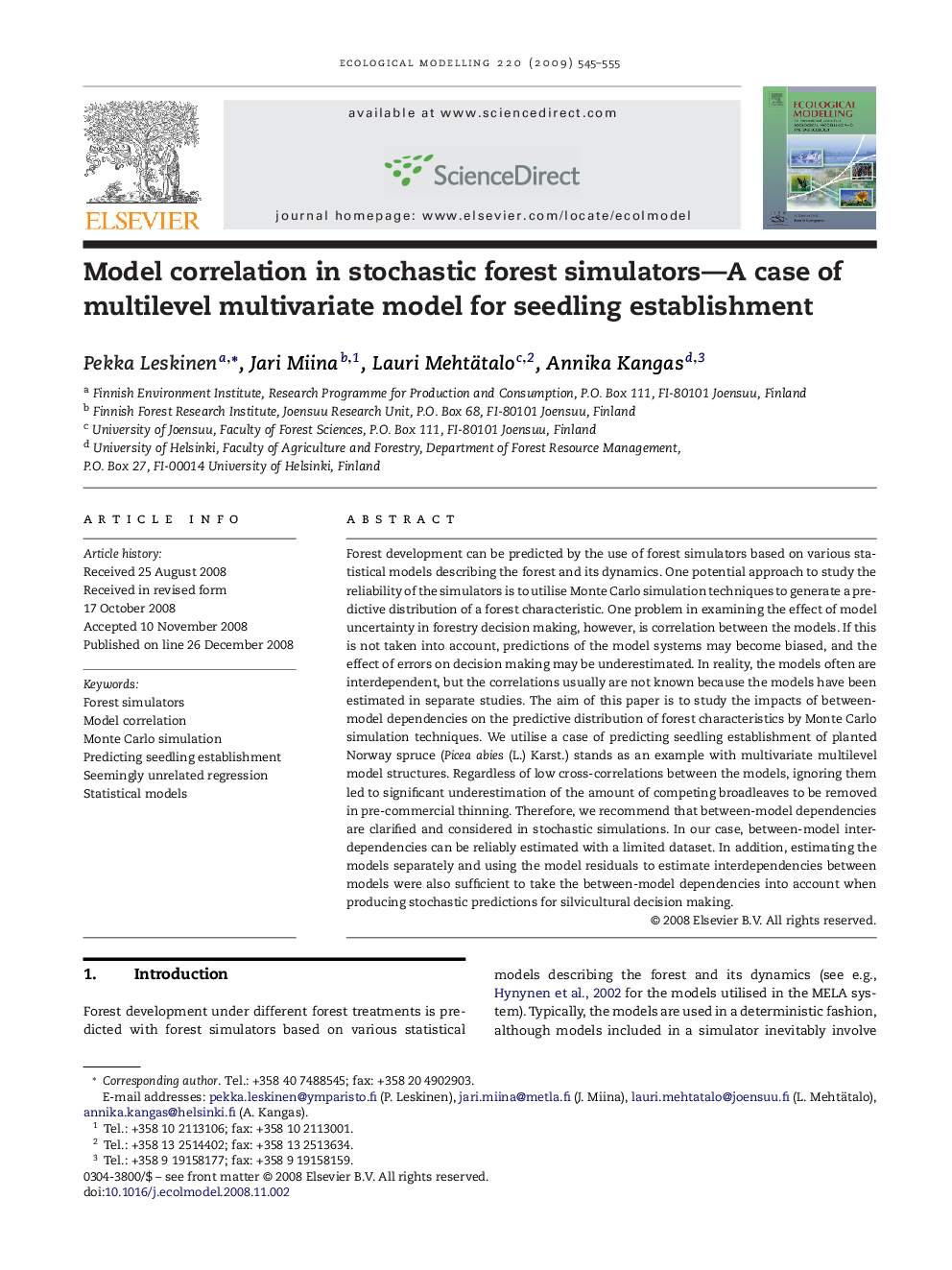| Article ID | Journal | Published Year | Pages | File Type |
|---|---|---|---|---|
| 4377704 | Ecological Modelling | 2009 | 11 Pages |
Abstract
Forest development can be predicted by the use of forest simulators based on various statistical models describing the forest and its dynamics. One potential approach to study the reliability of the simulators is to utilise Monte Carlo simulation techniques to generate a predictive distribution of a forest characteristic. One problem in examining the effect of model uncertainty in forestry decision making, however, is correlation between the models. If this is not taken into account, predictions of the model systems may become biased, and the effect of errors on decision making may be underestimated. In reality, the models often are interdependent, but the correlations usually are not known because the models have been estimated in separate studies. The aim of this paper is to study the impacts of between-model dependencies on the predictive distribution of forest characteristics by Monte Carlo simulation techniques. We utilise a case of predicting seedling establishment of planted Norway spruce (Picea abies (L.) Karst.) stands as an example with multivariate multilevel model structures. Regardless of low cross-correlations between the models, ignoring them led to significant underestimation of the amount of competing broadleaves to be removed in pre-commercial thinning. Therefore, we recommend that between-model dependencies are clarified and considered in stochastic simulations. In our case, between-model interdependencies can be reliably estimated with a limited dataset. In addition, estimating the models separately and using the model residuals to estimate interdependencies between models were also sufficient to take the between-model dependencies into account when producing stochastic predictions for silvicultural decision making.
Related Topics
Life Sciences
Agricultural and Biological Sciences
Ecology, Evolution, Behavior and Systematics
Authors
Pekka Leskinen, Jari Miina, Lauri Mehtätalo, Annika Kangas,
